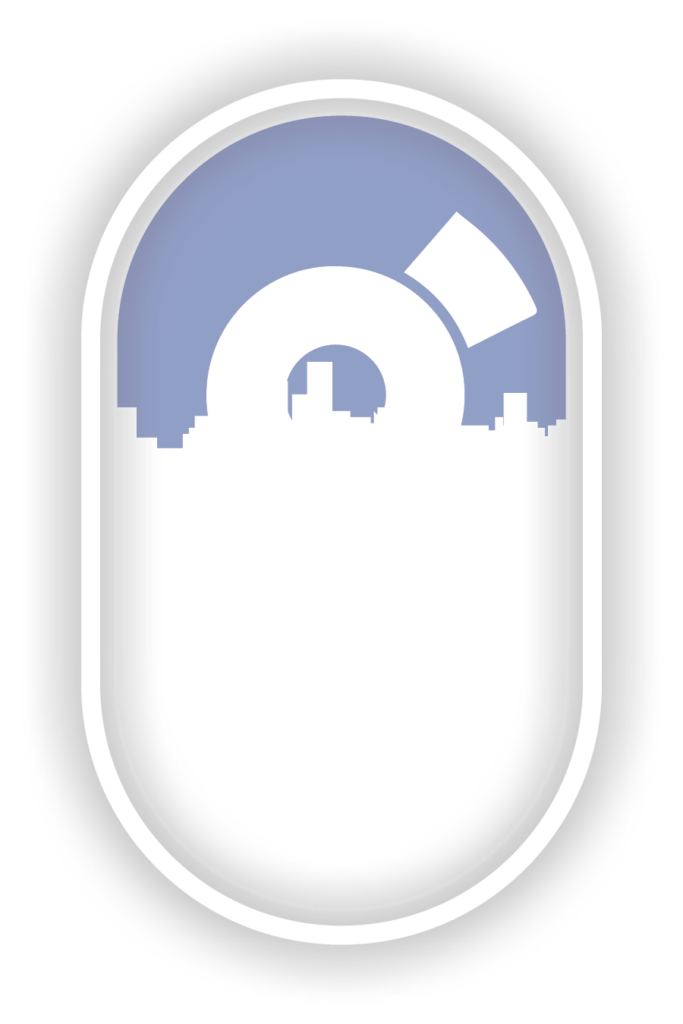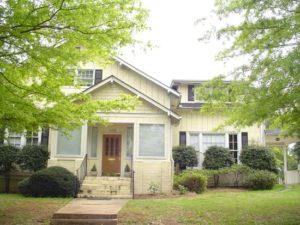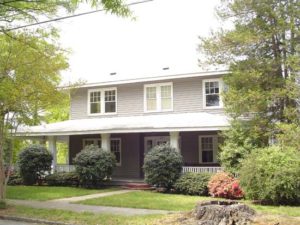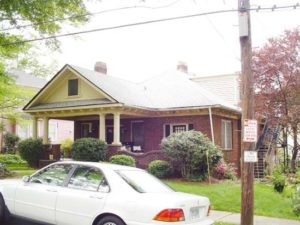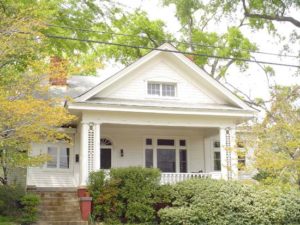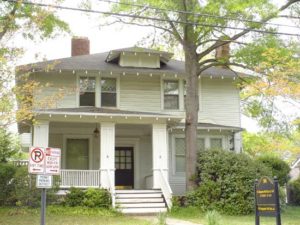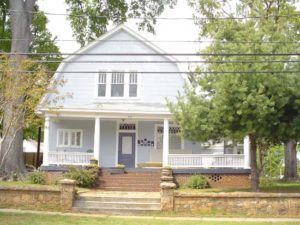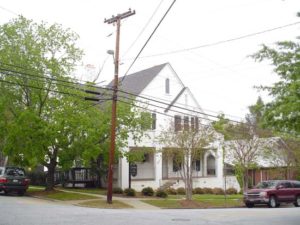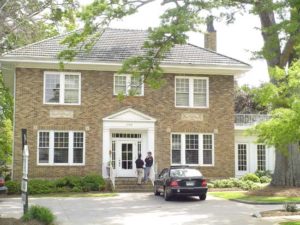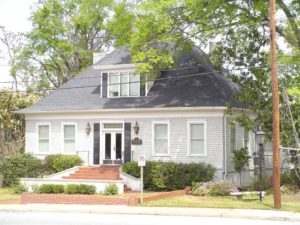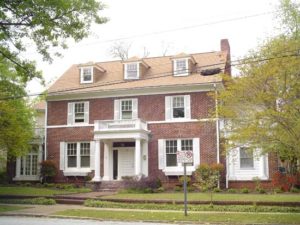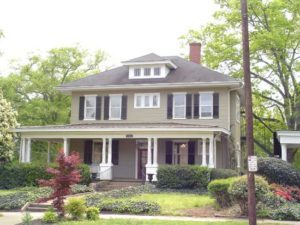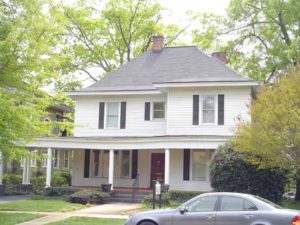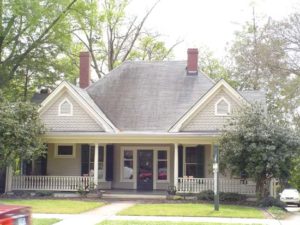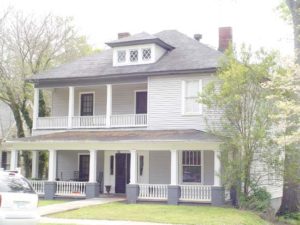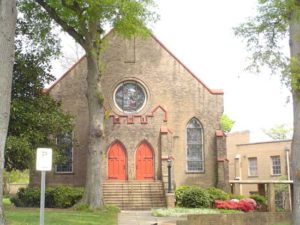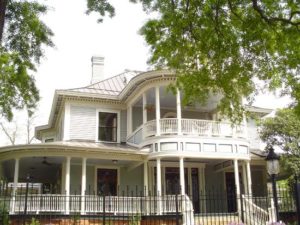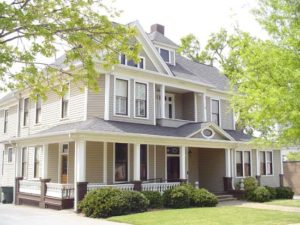Area History
THE PETTIGRU HISTORIC DISTRICT
The Pettigru Street Historic District is located to the east of the downtown area and contains 88 structures. The majority of the buildings were built between 1910 and 1930 and are of frame and brick construction. The district features a wide variety of building styles, including the Queen Anne and local interpretations of the bungalow and Colonial Revival forms. Many of the streets are tree-lined, and the buildings have common setbacks. The Historic District is significant for its wide range of architectural styles, which mirrors the growth of Greenville between 1890 and 1930. Once part of the James Boyce and Rowley family estates, this area was largely unsettled until the turn-of-the-century. Sections of the Boyce estate were subdivided by 1900 and Victorian cottages began to dot the area. Several large tracts were bought by the Parker family and they erected 2 large homes.
Residential development began on a large scale after the subdivision of the “Boyce Lawn” property in 1907. This area between East North and East Washington was divided into a large number of lots, and new streets were established, which were named after the faculty members of the Furman Theological Seminary. The district was also the home of many prominent businessmen and mill owners. After more recent commercial encroachment, the Pettigru District of today is about half residential and half commercial.
The area is unique in the city for its evolution of styles from the Victorian era to 1930. Because of the wide variety of architectural styles, the large neighborhood was nominated to the National Register of Historic Places in 1981. It is the largest historic district in the city.
Bon Secours Wellness Arena History
Original state legislation forming Greenville Memorial Auditorium District (GMAD), which later became the Greenville Arena District, dates back to 1940. GMAD oversaw the Greenville Memorial Auditorium which opened in 1958 and changed to the Greenville Arena District (GAD) in 1998, upon the construction and opening of the Bon Secours Wellness Arena (first known as the BI-LO Center).
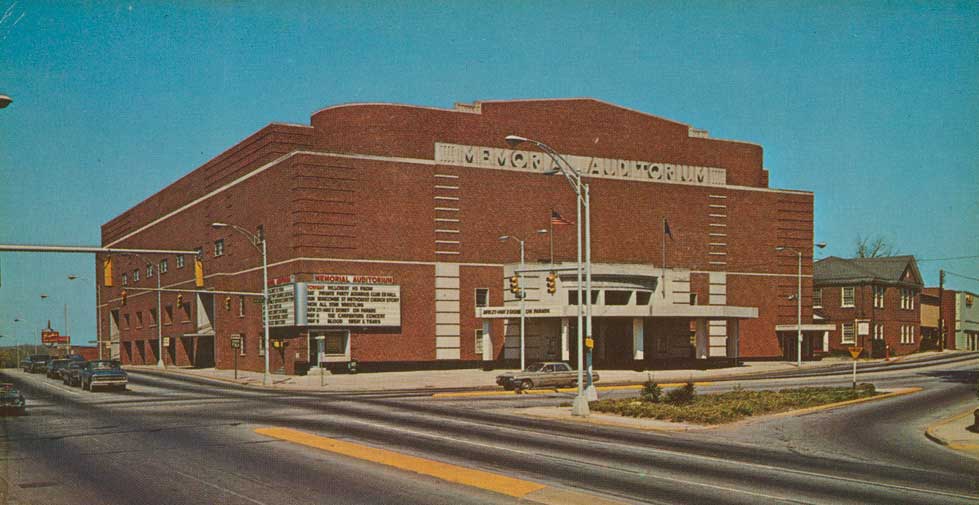
The Lions Club began the Memorial Auditorium project in 1938. Even with the club’s active support, it took over twenty years to complete the project, including delays from two wars, lawsuits, and many disagreements over design elements. The Greenville Memorial Auditorium opened its doors, before completion, and held its first event, a basketball game between Furman University and the University of West Virginia on December 1, 1958.
The Memorial Auditorium held concerts for three decades for some of the “who’s who” of American popular music, including James Brown, Aretha Franklin, Tom Jones, Johnny Cash and Chuck Berry. On October 19, 1977, Lynyrd Skynyrd played at the Auditorium and ended their performance by singing “Freebird” for over twenty minutes. The next day, lead singer Ronnie VanZant and band members Steve and Cassie Gaines were killed in an airplane crash.
The Memorial Auditorium stood at the corner of East North Street and Church Street near Christ Church until the late 1990’s. The Bon Secours Wellness Arena (then, BI-LO Center) was opened on September 3, 1998, and has hosted award-winning artists such as Bruce Springsteen, Pearl Jam, Prince, George Strait, The Eagles and Carrie Underwood, as well as events like the Ringling Bros.and Barnum & Bailey Circus, Trans-Siberian Orchestra and WWE.
